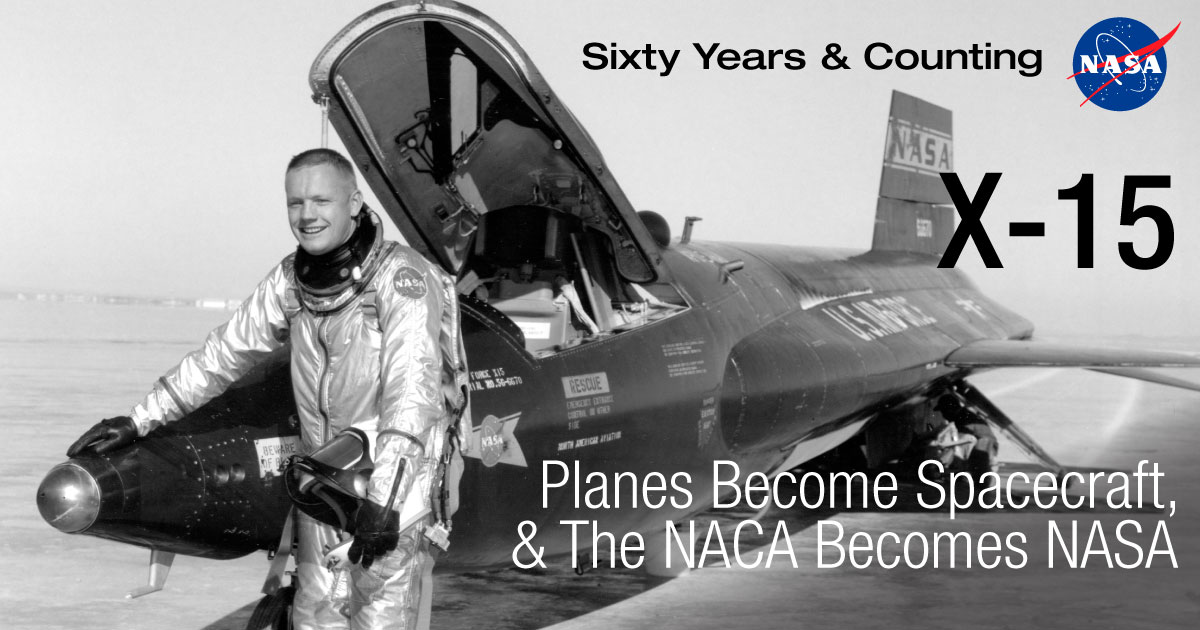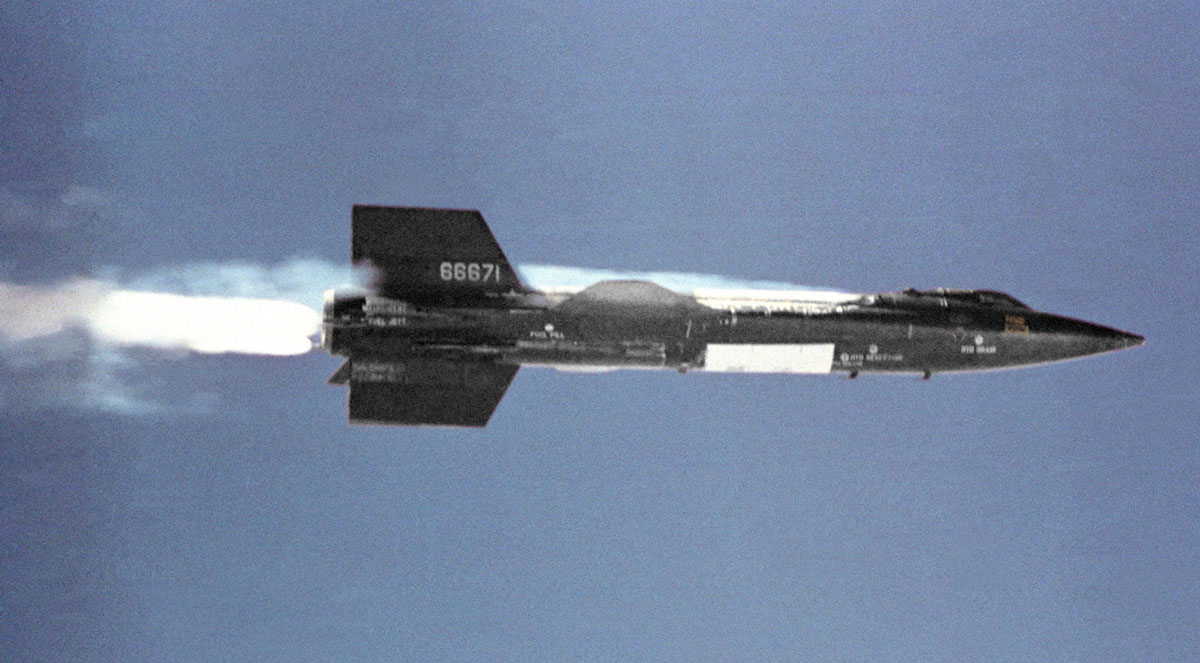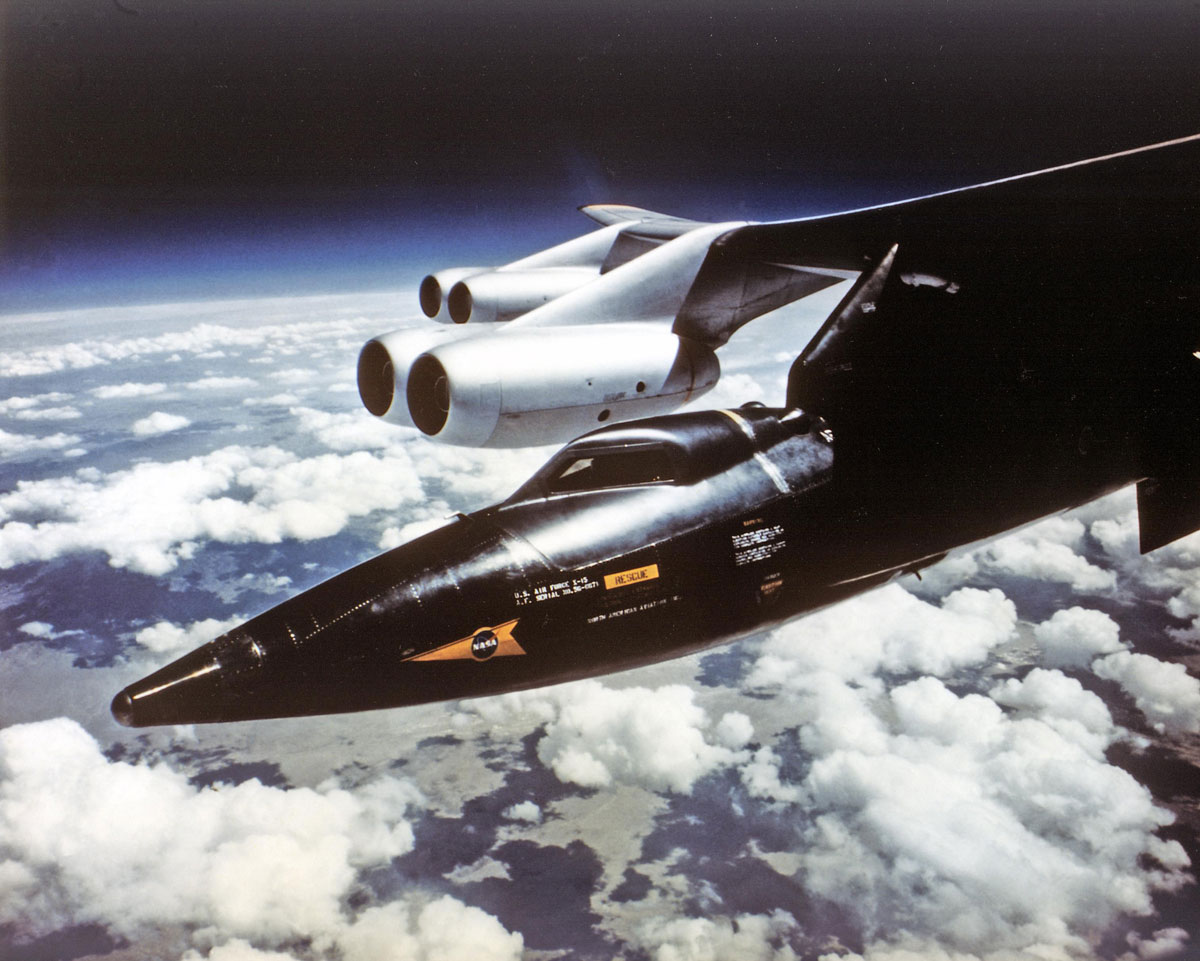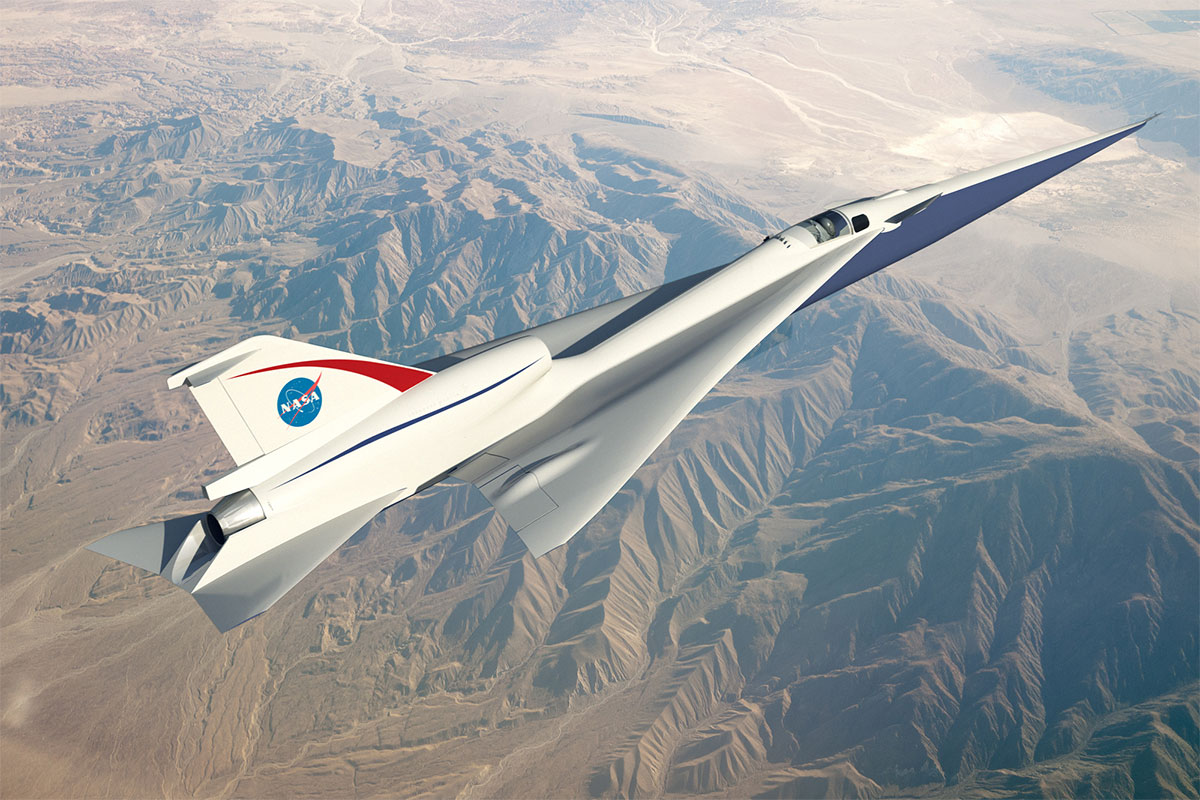
X-15 pilot and future NASA astronaut Neil Armstrong stands beside one of the planes.
Image Credit: NASA
Editor’s note: This is the first in a series of features that will culminate with NASA’s 60th anniversary on Oct. 1, 2018. Rather than a purely chronological view, the series will have a broader emphasis, highlighting historical moments and programs that brought NASA to where it is today.
Though the X-planes became a formative part of the space program, their development was rooted in engineers’ efforts to simply make airplanes go faster. Researchers had learned by the 1930s that planes driven by piston engines and propellers ultimately ran into performance problems at about 350 mph, and data was already showing there would be additional problems at even higher speeds.
The X-1 program resolved enough of those problems to allow Chuck Yeager to fly faster than sound in 1947, and researchers turned to possibilities of “hypersonic” flight, Mach 5 or higher. In the mid-1950s, those efforts became the X-15 program, led by the National Advisory Committee on Aeronautics (NACA), NASA’s predecessor agency, in partnership with the U.S. Air Force and Navy.
As it did so many other things, the Soviet Union’s launch of Sputnik changed how the X-15 was viewed. With no U.S. satellite launch on the horizon, Americans focused on the new vehicle. It made its public debut on Oct. 15, 1958. (Ironically without its managing organization; two weeks earlier, NACA had become NASA.)

X-15 #2 in flight in 1961.
Image Credit: NASA
As Harrison “Stormy” Storms of North American Aviation, the X-15’s builder, said, “The rollout of the X-15 marks the beginning of man’s most advanced assault on space. This will be one of the most dramatic, as in the X-15 we have all of the elements and most of the problems of a true space vehicle.”
Ultimately, the X-15 flew 199 times, and on Oct. 3, 1967, U.S. Air Force pilot Pete Knight set a speed record of Mach 6.7. But as important as the records was everything that NACA, and later NASA, researchers learned about operating craft at high speeds and altitudes. Roger Bilstein summarized the achievements this way in “Testing Aircraft, Exploring Space:”
"The fallout was far-reaching in numerous crucial areas . . . The X-15’s survival encouraged extensive use of comparatively exotic alloys, such as titanium and Inconel-X, which led to machining and production techniques that became standard in the aerospace industry. . . . (T)he chance of accidental loss of pressurization . . . prompted development of the first practical full-pressure suit for pilot protection in space. The X-15 was the first to use reaction controls for attitude control in space; re-entry techniques and related technology also contributed to the space program, and even earth science experiments were carried out by the X-15 in some of its flights."

The X-15 was air launched from a B-52 aircraft at 45,000 feet and at a speed of about 500 mph. After dropping from the B-52, the rocket engine provided thrust for the first 80 to 120 seconds of flight. The remainder of the normal 10 to 11 min. flight was powerless and ended with a 200-mph glide landing.
Image Credit: NASA
Taking over the X-15 program produced more than technical knowledge, though. “Although NACA in essence bootstrapped air force and navy funds for the X-15,” Bilstein wrote, “it was very much a NACA idea and design from start to finish. In many ways, the X-15 program signaled a shift to the research, development and management functions that characterized the NASA organization soon to come.”
The X-15 and other X-planes are more than a historical legacy for NASA. The program is the core of NASA’s New Aviation Horizons, an array of new experimental aircraft that will carry on the legacy of demonstrating advanced technologies to push back the frontiers of aviation. Goals include showcasing how airliners can burn half the fuel and generate 75 percent less pollution during each flight as compared to now, while also being much quieter than today’s jets – perhaps even when flying supersonic.

The Quiet Supersonic Technology, or QueSST, concept is in the preliminary design phase and on its way to being one of NASA’s first X-planes.
Image Credit: NASA
Read more:
X-15 Fact Sheet, NASA Armstrong Flight Research Center
NASA Takes Next Step in Green Aviation X-Planes (from 2016)
American X-Vehicles (NASA History publication from 2003) (781 KB PDF)